Happy New Year to one and all; I've been working on the room I first began dealing with when I moved in (see What is this wall made from?). Having removed the radiation, I discovered it had been leaking for some time onto the skirting (also gone). So, off came the skirting, then the boards and, while examining the joists in case the damp had got through, I came across some signs of woodworm. None seemed too alarming until I looked at a joist that has been excessively deeply notched (to about 1/4 of its depth) for the feed and return lines to/from the boiler. While thinking about how to sister this joist, I suddenly realised that the upper 30-40mm have seen quite a bit of woodworm. More worryingly, the joist ends seem to have been infested a bit as well - and the exterior walls have a known issue with penetrating damp thanks to defective rendering (which is, finances and weather allowing, going to be replaced this year; all the houses on this estate are rendered, so I believe it was built to take the stuff).
Having read some prior threads here I will not please anyone by saying that I've given the affected areas a precautionary dose of permethrin; I can only see a few signs of what might be recent activity (some fine yellow dust at the end of one joist; see below), and the area has been undisturbed since about 1993 (thank you, old pages from The Sun) but I don't want to take chances, particularly not in an inaccessible area. I've also, since the radiator's been removed, put a portable electric radiator in, which is keeping the temp in the room at about 15C. Electronic meter readings put all the joists within a range from 12-16.5%; obviously this isn't calibrated for the specific wood type and so forth, but that sounds all right to me - certainly the joists don't feel damp, and as I said, I don't see signs of wetness or fungi. Nor, for that matter, any beetles.
Pics are below. #1 and #5 are the most seriously affected (and notched) joist. The others are the remaining woodwormed joists, with #6 being the only one where I can see any signs of life, i.e. that fine yellow dust (though that said, I did also cut the skirting board away directly above it.)
So, my questions are:
Finally, I realise a 1920s semi's joists aren't exactly period property material, but I do like to try and do things right, rather than bodge!
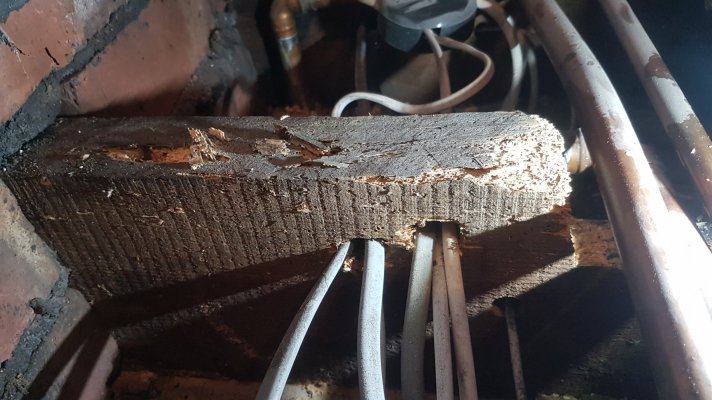
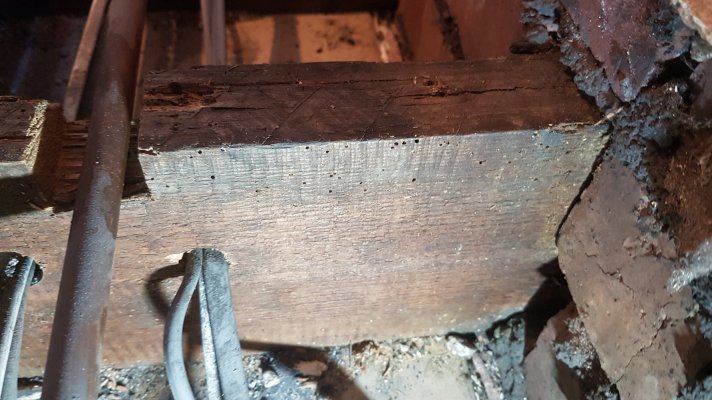
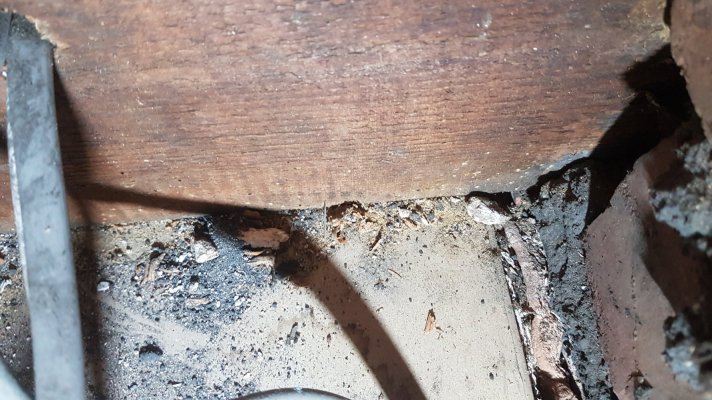
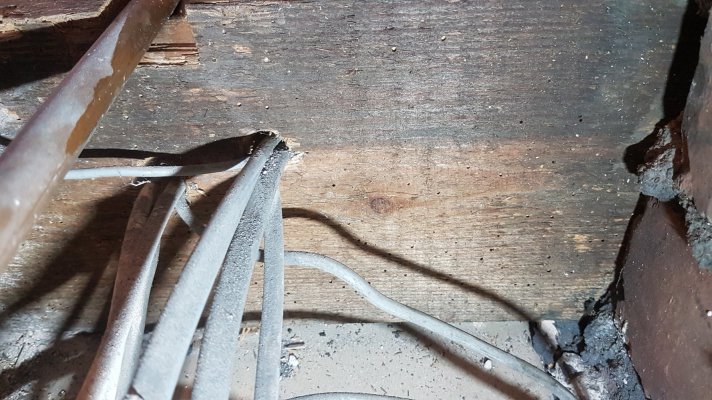
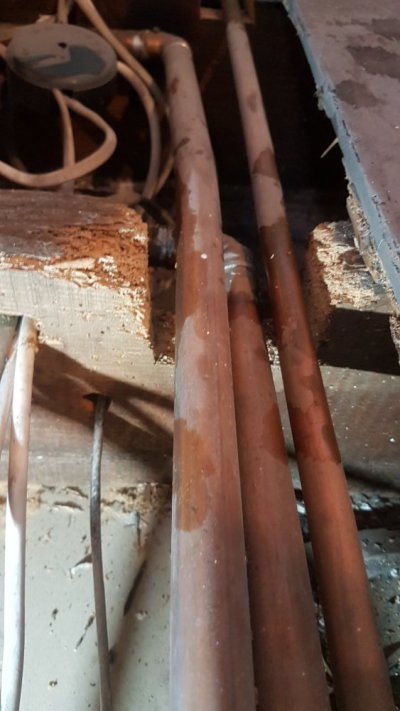
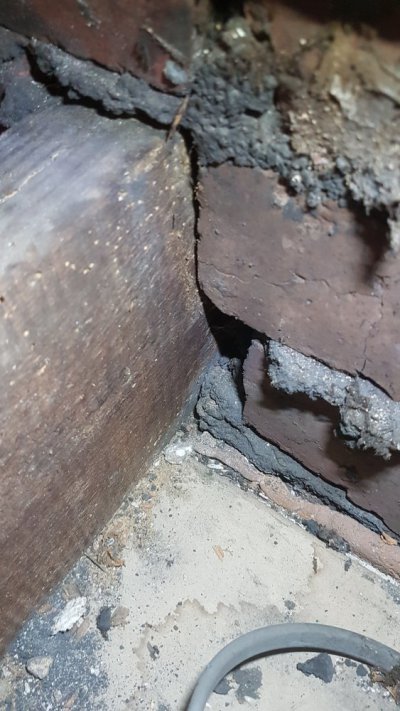
Having read some prior threads here I will not please anyone by saying that I've given the affected areas a precautionary dose of permethrin; I can only see a few signs of what might be recent activity (some fine yellow dust at the end of one joist; see below), and the area has been undisturbed since about 1993 (thank you, old pages from The Sun) but I don't want to take chances, particularly not in an inaccessible area. I've also, since the radiator's been removed, put a portable electric radiator in, which is keeping the temp in the room at about 15C. Electronic meter readings put all the joists within a range from 12-16.5%; obviously this isn't calibrated for the specific wood type and so forth, but that sounds all right to me - certainly the joists don't feel damp, and as I said, I don't see signs of wetness or fungi. Nor, for that matter, any beetles.
Pics are below. #1 and #5 are the most seriously affected (and notched) joist. The others are the remaining woodwormed joists, with #6 being the only one where I can see any signs of life, i.e. that fine yellow dust (though that said, I did also cut the skirting board away directly above it.)
So, my questions are:
- Given the depth of the notching (approx. 1/4 of the joist's depth), does the joist need sistering? (I plan to make this into a workroom, so there's going to be a fairly chunky bench running the width of the room; one end will rest on the worst joist.)
- If it does, given the joist's upper 30-40mm are significantly weakened, how will this affect the process?
- Is it worth applying a wood hardener or similar to the affected area, in the hope of improving its strength in compression?
- If the wood is beyond repair, can a bridging piece be put in place of the affected area?
Finally, I realise a 1920s semi's joists aren't exactly period property material, but I do like to try and do things right, rather than bodge!






